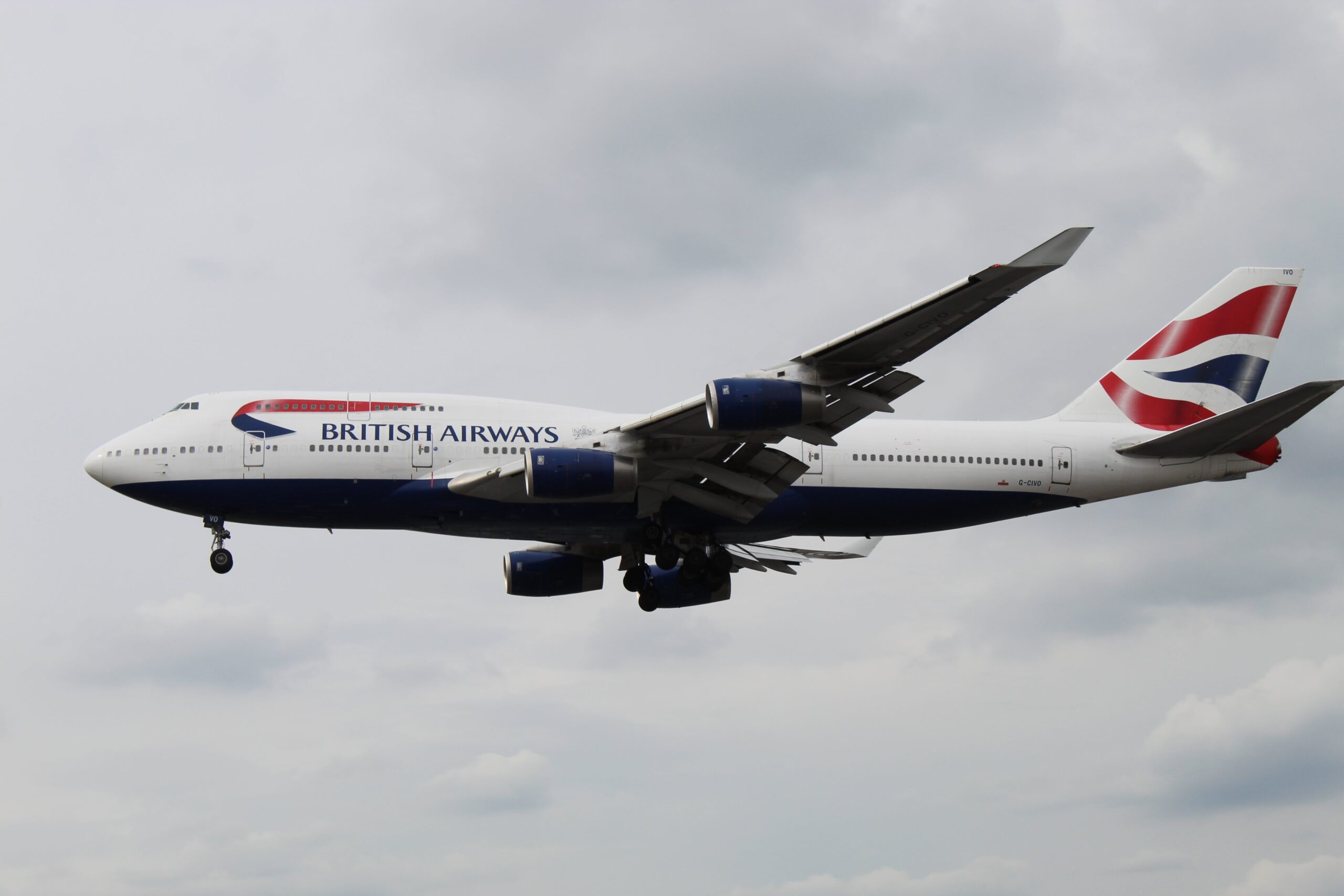They were built in the 20th century, making them ancient in aircraft terms. They have four thirsty engines rather than the twin jets of modern planes. But until the coronavirus pandemic struck, British Airways had planned to fly its venerable Boeing 747s for another four years.
Today, though, the last two Jumbo jets in the colours of BA took off simultaneously from Heathrow on their final journeys. With the slump in intercontinental aviation, British Airways is retiring its final 747s early.
To mark the event, the two remaining Jumbo jets at Heathrow airport were dispatched simultaneously from both the southern and northern runways.
In normal times the prospect of such a display at the height of the morning rush would be unthinkable, but traffic at Heathrow and other UK airports has collapsed.
Alex Cruz, chairman and chief executive of British Airways, paid tribute to “the incredible part they have played in our 100-year history and to the millions of customers and BA colleagues who have flown on board and taken care of them”.
The two aircraft, with registrations G-CIVB and G-CIVY, have flown 59 million and 45 million miles respectively.
They are flying to Cardiff and to Kemble in Gloucestershire to be scrapped.
They last flew commercially in April. A number of other British Airways 747s are in storage at Cardiff airport, while several more are in the California desert at Victorville.
During its 49-year history with the airline, the Jumbo jet became known as the Queen of the Skies.
According to the aviation analyst Cirium there are currently 492 Boeing 747s in service, in storage or on order. Thirty per cent are passenger aircraft, but of the 157 Jumbo jets in operation, just 35 are in service – with the remainder in storage.
Only one in nine 747s in service is carrying passengers, with the remainder used for cargo.
The 747 entered service with Pan Am in January 1970. It offered greater luxury for first-class passengers, and more seats in economy class, than ever before – two-and-a-half times the capacity of existing aircraft.
Fares were cut to fill the increased number of seats, allowing average wage-earners to travel long-haul for the first time.
BOAC – the long-haul predecessor of British Airways – was among the first carriers to order the plane, but due to a dispute with pilots they remained on the ground at Heathrow for around a year before entering commercial service. Cirium calculates that peak 747 was in July 1998, with 986 aircraft actively flown.
The arrival of the Airbus A380 “SuperJumbo” in 2007 relegated the Jumbo to second-largest passenger plane. The European rival was bigger, quieter and more fuel efficient. But the 747 outsold it by six to one.
How big is a 747?
Length: 232 feet (71m). Wingspan: 211 feet (64m). Height: 69 feet (19.4m).
How is it powered?
Four engines (sometimes, if a spare is being flown, five). British Airways’ fleet was fitted with Rolls Royce RB211-524H engines.
How fast?
The maximum airspeed is 614mph (988km/h). Over the ground, the speed can be significantly higher with a tailwind. But the typical cruising speed is 565mph (910km/h). A 747-400 typically takes off at 180mph (290km/h) and lands at 160mph (260km/h).
How far?
The stated range of BA’s Jumbo fleet was 8,357 miles (13,450km), which was more than enough for the longest British Airways route, from London to Santiago in Chile.
The longest regularly scheduled route was from Sydney to Dallas-Fort Worth, with Qantas. The distance is 8,578 miles (though the inbound flight, typically hampered by headwinds, had to land in Brisbane to refuel, as that was half-an-hour shorter).
When did UK airlines start flying the plane?
Jumbo jets were first flown by BOAC (long-haul predecessor to British Airways) on 14 April 1971.
Virgin Atlantic began its life in June 1984 using a secondhand 747 to fly between Gatwick and New York Newark.
How many passengers?
That depends on the airline’s chosen configuration. The high-density 747s deployed on Japanese domestic routes carried up to 550 passengers. Virgin Atlantic had 455 seats on its Jumbo jets. But British Airways had no more than 345 seats on its 747s, and on some of the planes only 275; these were known as “Super High-J”, code because of the large number of Club World seats.
During its lifetime, the world’s 747 fleet has flown almost four billion people – the equivalent of half the world’s population.

